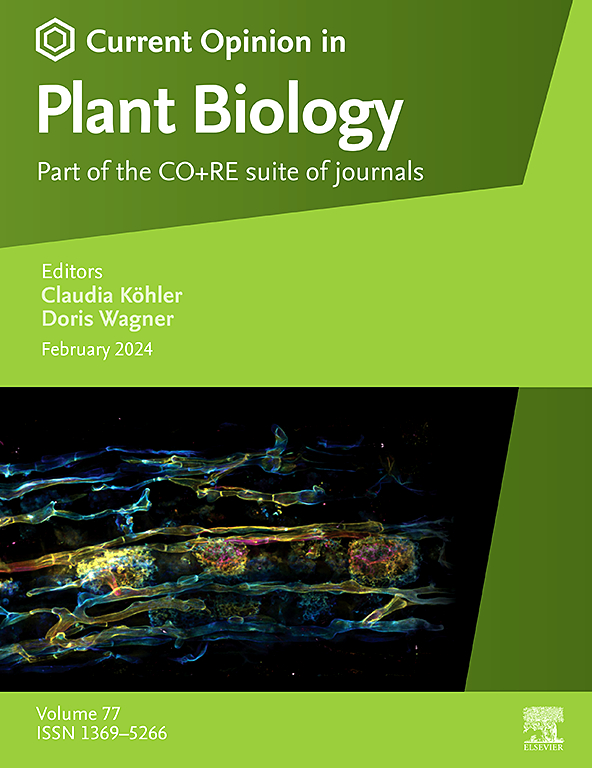植物组蛋白串扰密码:解读表观遗传复杂性
IF 7.5
2区 生物学
Q1 PLANT SCIENCES
引用次数: 0
摘要
组蛋白修饰是植物染色质结构和基因表达的重要调节因子。传统上,每个修饰被视为一个独立的信号,标记特定的染色质状态。然而,表观基因组分析、基因组编辑和蛋白质组学的最新进展表明,组蛋白标记通常以组合方式起作用,参与分层、合作和对抗关系。特别是,对拟南芥的研究揭示了激活和抑制修饰之间的动态相互作用,以及它们与DNA甲基化、组蛋白变异和RNA修饰的协调。其中,H3K4和H3K36甲基化已成为将发育和环境信号整合到上下文依赖性转录反应中的关键调控枢纽。越来越多的证据表明,染色质调节并不涉及孤立的修饰,而是一个相互依赖的标记的复杂网络。在这篇综述中,我们讨论了最近组蛋白修饰和其他调控层之间的串扰,以强调组合染色质调控及其潜在的分子机制如何促进植物的转录控制和表观遗传反应。这些关键的见解扩展了我们对组蛋白修饰在植物生物学中的多样性和环境依赖性作用的理解。本文章由计算机程序翻译,如有差异,请以英文原文为准。
The histone crosstalk code in plants: Deciphering epigenetic complexity
Histone modifications are essential regulators of chromatin architecture and gene expression in plants. Traditionally, each modification was viewed as an independent signal marking specific chromatin states. However, recent advances in epigenome profiling, genome editing, and proteomics have revealed that histone marks often function in combination, engaging in hierarchical, cooperative, and antagonistic relationships. In particular, studies in Arabidopsis thaliana have uncovered dynamic interactions between activating and repressive modifications, as well as their coordination with DNA methylation, histone variants, and RNA modifications. Among these, H3K4 and H3K36 methylation have emerged as key regulatory hubs that integrate developmental and environmental signals into context-dependent transcriptional responses. This growing body of evidence suggests that chromatin regulation involves not isolated modifications but rather a complex network of interdependent marks. In this review, we discuss recent examples of crosstalk between histone modifications and other regulatory layers to highlight how combinatorial chromatin regulation and its underlying molecular mechanisms contribute to transcriptional control and epigenetic responsiveness in plants. Such key insights expand our understanding of the diverse and context-dependent roles of histone modifications in plant biology.
求助全文
通过发布文献求助,成功后即可免费获取论文全文。
去求助
来源期刊

Current opinion in plant biology
生物-植物科学
CiteScore
16.30
自引率
3.20%
发文量
131
审稿时长
6-12 weeks
期刊介绍:
Current Opinion in Plant Biology builds on Elsevier's reputation for excellence in scientific publishing and long-standing commitment to communicating high quality reproducible research. It is part of the Current Opinion and Research (CO+RE) suite of journals. All CO+RE journals leverage the Current Opinion legacy - of editorial excellence, high-impact, and global reach - to ensure they are a widely read resource that is integral to scientists' workflow.
 求助内容:
求助内容: 应助结果提醒方式:
应助结果提醒方式:


